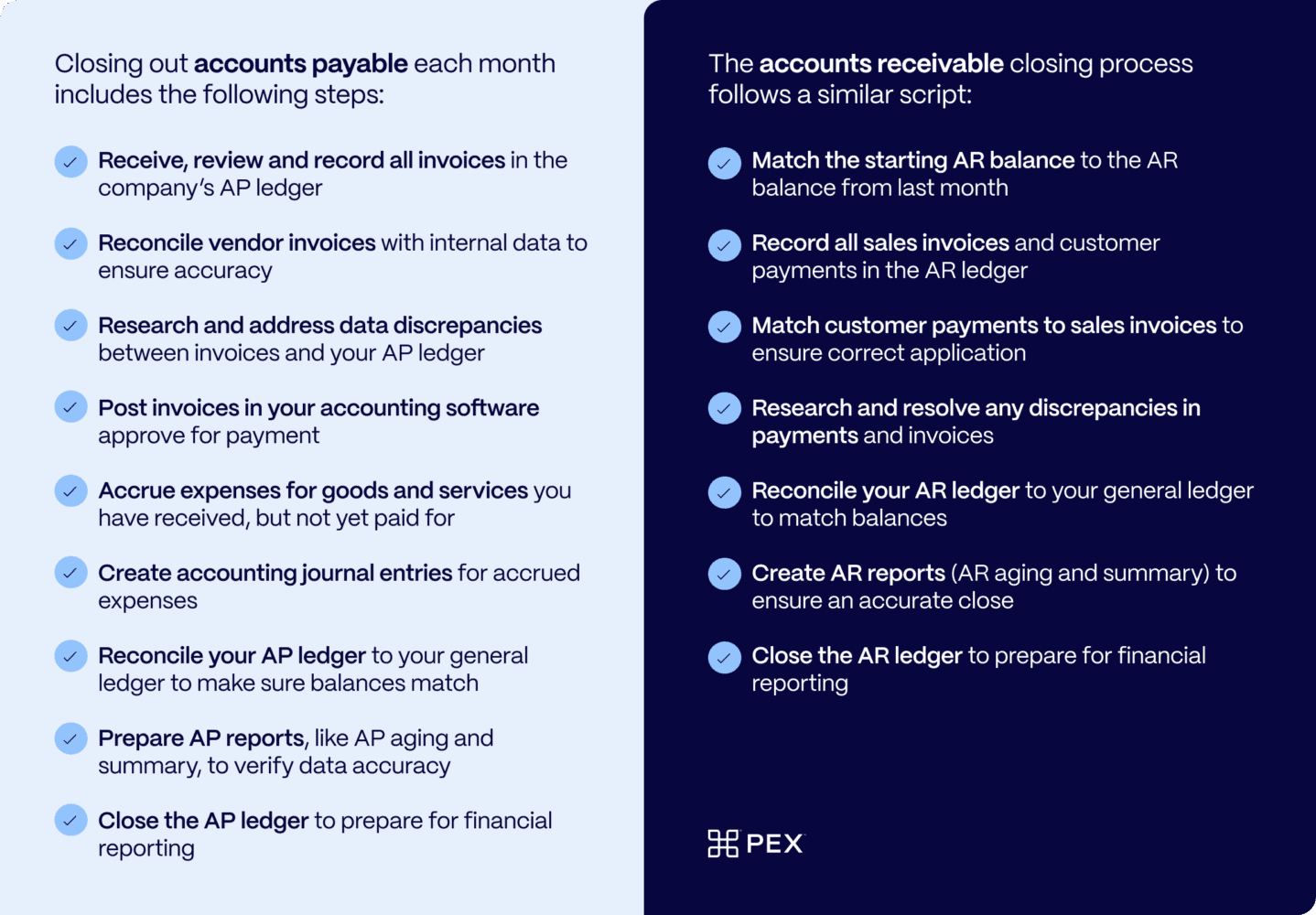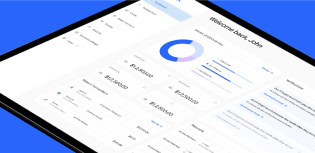The ultimate checklist for your month-end close process

It wouldn’t be a stretch to say that month-end close is the bane of most financial teams’ existence. Nearly 100% of reporting finance employees are unhappy with the month-end close process at their organization. Relying on manual close processes is the biggest offender – leaving the door open for time-consuming data entry and human error.
Using multiple disparate systems can also contribute to a longer close. Finance staff spend precious time connecting spreadsheets with accounting software, for example. And even when those connections succeed, they can result in missing or inconsistent data that requires lengthy research and corrections.
These issues combined hinder visibility into the financial closing process. With the weight of manual work, finance teams are always behind. There’s no way to have a real-time view into financial data, impacting the accuracy of financial statements and strategic guidance for the organization.
No matter what your financial close looks like, it’s critical to have a repeatable framework each month for getting it done. Here’s our recommended month-end close checklist to follow as you work through the process.
Step 1: Verify and reconcile bank and credit card transactions
To start, you’ll need to pull together all of your company’s sources of spending. This list generally includes bank and credit card statements, but there could be other sources. You might have a line of credit that you’re drawing on for specific purchases, prepaid cards issued to specific employees or even petty cash. Just make sure to have a list of all spending sources.
With these spending records ready, you’re equipped to reconcile your list of transactions with the issuing bank or credit card. At its most manual, this process could mean reviewing a paper bank statement against transactions in your accounting software. With some level of automation, you may be able to upload the bank statement to your accounting software, identify discrepancies and correct your accounting records where necessary.
Step 2: Review and approve all expenses
Throughout each month, employees will be making purchases and submitting expense reports. Those reports likely require manager review before submitting to the finance team, who will then perform compliance checks and a final review. Your organization could have a frequent payout process, like once a week, or a longer one that occurs once a month. This process varies depending on each company.
If this process is happening continuously over time, there’s no need for an extra expense review and approval during the close process. If it only happens once a month, for example, you’ll need to do this work as part of the month-end close procedures. It typically follows this script:
- Employees submit expenses via the preferred expense reporting format
- Managers perform an initial review of employee expense reports
- Finance staff check expenses for compliance to spending policies
- Management conducts second or third level approvals, if necessary
- Finance leaders perform final review to ensure accurate expense categorization and regulatory compliance
- Finance teams process payments for delivery
Step 3: Close out accounts payable and receivable
Closing out accounts payable and accounts receivable are similar to the bank and credit card reconciliation process – they just have different sources. In the accounts payable close, the company is matching records with their vendors, rather than a bank. In accounts receivable, the company matches records with customer payments.

Step 4: Reconcile payroll and benefits
Similar to bank, credit card, AP and AR reconciliation, you’ll need to reconcile any wages paid to employees and benefits they receive each month. This includes verifying that the company paid each employee according to correct rates or hours. Finance staff will also need to ensure the correct tax payments, payroll deductions and benefits like insurance or retirement contributions are applied.
Once you verify all of this information, you’ll need to compare it to what’s in your general ledger. You can look at payroll reports, bank statements and benefits invoices to make sure that what you recorded matches the actual payment. If it doesn’t, you’ll need to research and resolve any issues. And definitely keep a copy of payroll reporting data in case you need it for future reference.
Step 5: Finalize financial statements
The work you’ve done to close the books also prepares your organization to create meaningful, accurate financial statements. Based on the financial reconciliation process, you can now create the following:
- Your balance sheet, which demonstrates your company’s assets and liabilities at the time of close
- Your income statement, or profit & loss (P&L) statement, which provides a snapshot of the business’s revenue, expenses, gains and losses at month-end close
- Your cash flow statement, which explains the movement of cash through the organization and illustrates liquidity
After pulling together these statements, it’s critical to review and correct any errors before sharing them more broadly. Stakeholders will use them to make a variety of decisions about the business.
Step 6: Share reports with stakeholders
There may be any number of stakeholders who need access to financial statements and reports each month. Board members and executives may want access so they can determine future actions for the business. Investors may need them to decide whether to fund company growth. Regulatory bodies may require reports with some frequency to ensure compliance. Auditors may need reports to verify that the company is accurately performing financial accounting.
No matter who the stakeholders are, It’s critical to share financial statements with them in a timely manner. That way they can make the necessary decisions and next steps based on the most current data.
How to simplify and speed up your month-end close process with PEX
PEX’s expense management platform takes much of the manual burden of month-end close and transfers it to automated systems. Instead of reviewing paper or PDF credit card statements against your accounting software, PEX offers prepaid, virtual and corporate card options that are integrated with our platform. Transactions automatically post in PEX as employees make purchases. AI-based receipt matching connects transactions to receipt images that employees upload via our mobile app.
Finance teams can pre-program GL codes per merchant to auto-populate as employees submit expenses. That means no more receipt chasing or bugging employees for GL codes and transaction details. And our custom spend rules, automated approval workflows and reimbursements make for an end-to-end process that eliminates the need for manual intervention while preventing unapproved spending.
We also offer the ability to auto-sync real-time expense data to a variety of accounting tools. Reconciliation speeds up significantly when expenses are automatically loaded into accounting software, which flags any discrepancies for review. Finance teams can focus on exceptions only, saving precious time on manual review and eliminating human error. Our customers have experienced dramatic results like:
- Family in Christ Community Church, who cut their reconciliation time from 5 hours to 20 minutes per month using the PEX integration with Aplos
- Skeehan & Young, an accounting firm that shaved off 8 hours of reconciliation time per client using the Daxko’s integration with PEX
Are you ready to streamline your month-end close processes, reclaiming your time and getting access to real-time data in the process? Book a demo with PEX today.
Similar resources
Opinions, advice, services, or other information or content expressed or contributed here by customers, users, or others, are those of the respective author(s) or contributor(s) and do not necessarily state or reflect those of The Bancorp Bank, N.A. (“Bank”). Bank is not responsible for the accuracy of any content provided by author(s) or contributor(s).








